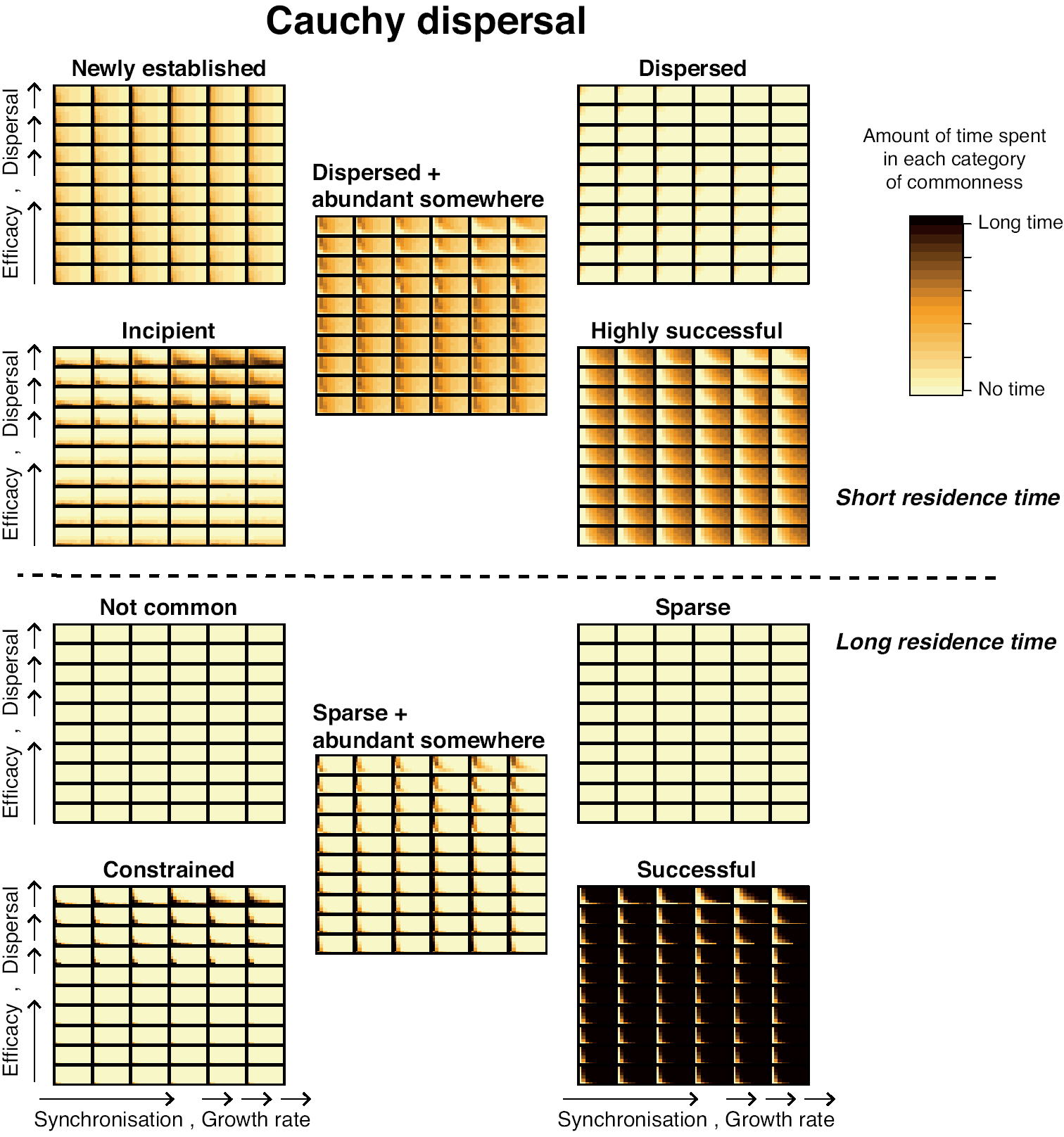
|
||
|
Effect of varying the interception efficacy and synchronisation of cross-boundary management for the Cauchy dispersal kernel on the fate of alien species populations and their assignment to different categories of commonness, using the framework presented in Fig. 1. Colours of the cells represent the proportion of time spent in each category of commonness for a specific combination of parameter values, with dark brown representing 50% of time and light yellow 0%. Results are presented so that variations in per capita growth and dispersal rates are nested within the synchronisation and efficacy of biosecurity measures. That is, within each category of commonness, each small rectangle represents a set of simulations for a given set of interception efficacy and synchronisation values. Within each small rectangle, the values of growth and dispersal rate are varied. Small rectangles in the bottom-left corners of each category of commonness are the lowest set of interception efficacy and synchronisation values, i.e. no cross-boundary management, and are the same as the matrices presented in Fig. 3C. Small rectangles in the top-right corners of each category of commonness are the highest set of interception efficacy and synchronisation values, and are the same as the matrices presented in Fig. 3D. Simulations have been done for 20 patches with a carrying capacity K = 10 000, and the outputs were averaged over 20 replicates. |